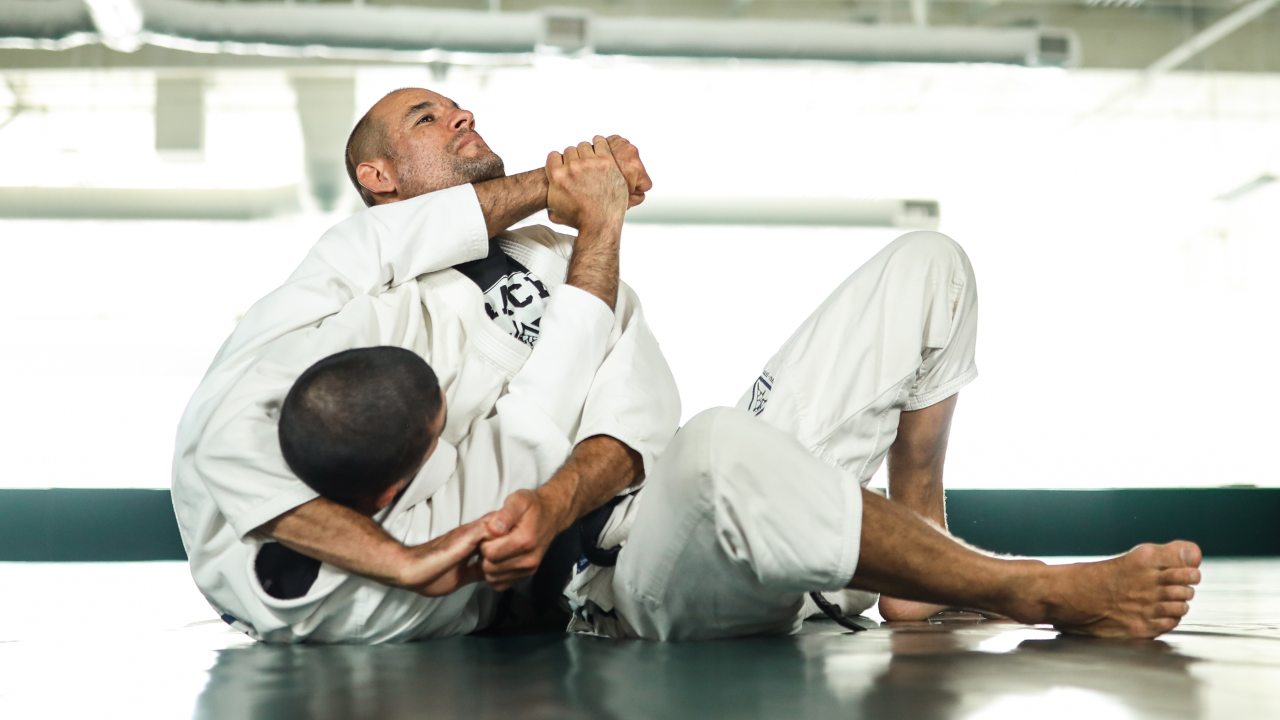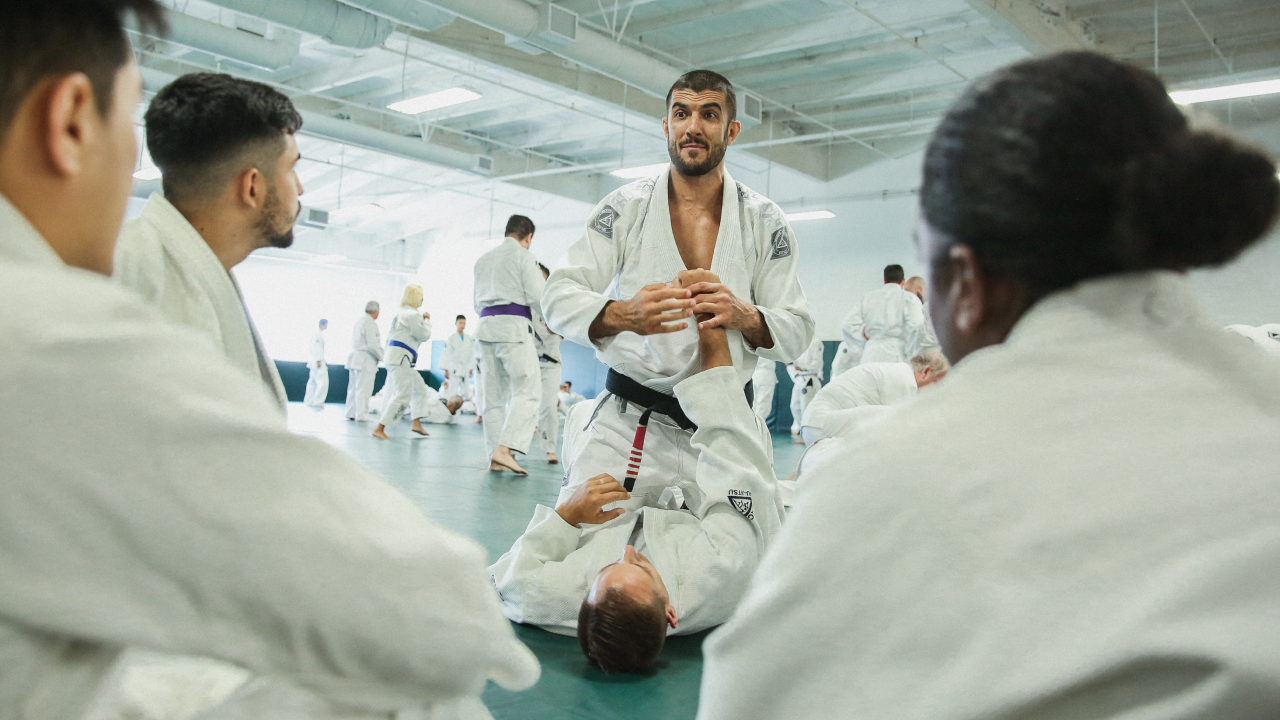How Jiu-Jitsu Training Has Evolved
Matt Thornton, the founder of SBG International and one of the most well-respected jiu-jitsu coaches in the Pacific Northwest, recently sat down to interview Henry Akins. Henry has been a major figure in the jiu-jitsu community for decades. He was just the third American to receive his black belt from Rickson Gracie, arguably one of the best Brazilian jiu-jitsu fighters to ever live, and Henry has spent years sharing the wisdom that he learned from Rickson with students of jiu-jitsu around the world.
In this blog post, the third in a three-part series, we’ll take a look at some of the things that helped Henry early on his jiu-jitsu career in the 1990s, the differences between training back then compared to today, the split between contemporary sport jiu-jitsu and jiu-jitsu’s roots in vale tudo, and finally some advice for being a good instructor. If you want to go back to read the first and second posts from the series, you can find the links here and here.
Focus on Success
Though Henry is a humble person, he is open about the fact that jiu-jitsu came naturally to him. Even when he was younger, he recognized that he picked up things faster than most other people at the gym. “I feel like I had a knack for jiu-jitsu,” he says. He also studied under Rickson Gracie and was Rickson’s Uke. This certainly helped, too.
However, even natural talent and regular training with Rickson Gracie are not enough to get a person to the black belt level. Henry also put in a lot of time and effort into developing his technique. For Henry, this kind of focus is what it takes to become a high-level fighter and a black belt. Even when he wasn’t in class, he was always thinking about jiu-jitsu. In the cases where people would dominate him or keep beating him using certain techniques, he would revisit what they were doing over and over again until he managed to reverse engineer the reason for why things weren’t going the way he wanted them to go.
Additionally, Henry has always had mats in his house and surrounded himself with friends and even roommates who were also training jiu-jitsu. If something was really puzzling him after class, he could always throw down a mat in the garage, the basement, or even the living room and roll with one of his buddies to figure out where he was going wrong.

Differences Between Jiu-Jitsu in the 1990s vs. Now
Henry moved out to Los Angeles to train with Rickson back in the 1990s. Since that time, jiu-jitsu has exploded in popularity. As Henry notes, this doesn’t just mean that more people are doing jiu-jitsu; it also means there’s more brain power going into evolving techniques and making it better. Jiu-jitsu in 2024 is more sophisticated than jiu-jitsu in 2014, which was more sophisticated than jiu-jitsu in 2004, which was more sophisticated than jiu-jitsu in 1994.
Additionally, training has become a lot smarter. In the past, the training methodologies were rough and there was a culture of intensity that turned a lot of students off because even people who want to become professional fighters recognized that they couldn’t train at 100% nonstop for years. Relatedly, this method of training is rough on the body, and a lot of students walked away because they kept reaggravating injuries.
Today, the culture within jiu-jitsu is less about toughness for the sake of toughness and more about developing better fighters while preventing serious injury. As Henry notes, you can’t be a world-class fighter if you’re always injured and you’re not going to retain students if they can’t stay healthy. As a result, more controlled methods of training like positional sparring and flow rolling have become far more common.
Training with Strikes
Though jiu-jitsu training has become less rough than it once was, students should still learn how to use and defend against strikes should they want to become proficient in self-defense. Henry feels passionately about this.
As Henry explains, a martial art is not a sport. It is developed for combat. If a student is coming to learn how to protect themselves or someone they care about, then Henry feels it is incumbent upon him to teach strikes. Training with strikes is fundamentally different from training without them because you are allowing certain techniques to develop that wouldn’t otherwise be used. This works both ways, since you’re neither defending against strikes nor devising an offensive strategy that employs strikes. If you then get into an altercation in the real world where strikes are permitted, it will be very difficult to adjust.
With sport jiu-jitsu, where strikes are not allowed, students will be mentally stimulated, and they get a good workout, but they will not learn all of the techniques necessary to defend themselves in an altercation. Even jiu-jitsu fighters who are at the top of their game struggle to transition from sport jiu-jitsu to MMA because you need to have a solid striking game and be able to defend against strikes if you are going to survive.

What Makes a Good Instructor?
Though Henry and Matt end their discussion with a segment aimed at instructors, students should take note here and see if these are the kinds of things that they observe in their own instructor.
Perhaps the most important thing that Henry points out is that instructors need to retain their curiosity. They need to focus on the why for each step in a technique. It’s not just knowing that a hand is supposed to go in a certain place or that one’s arm or leg is supposed to be at a certain angle—it’s the why. Instructors need to have a full understanding of how jiu-jitsu works as a system and recognize how each step advances one’s objective, whether it’s to pass an opponent’s guard or to maintain dominance. Moreover, instructors need to have verbal answers to all these questions and to not just know them instinctually.
For Matt, he believes that four things make a good instructor. One, all instructors need to recognize that they are there for the students. Two, they need to put thought into what they are doing. Three, no instructor should ever ridicule anyone. Finally, he believes that a good instructor should never insert their own preferences as knowledge.
“My job is not to pass on my game,” Matt says. “My game is irrelevant. My job is to pass on the fundamentals of the curriculum, which they’re not going to figure out on their own.”

